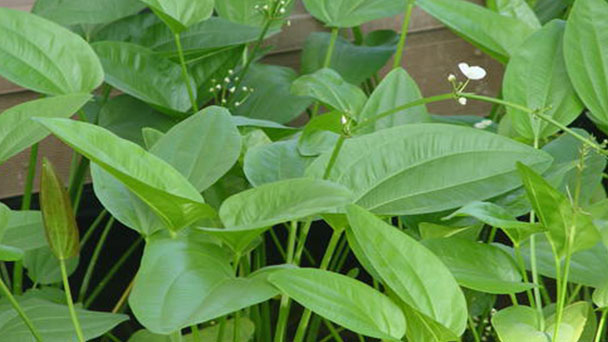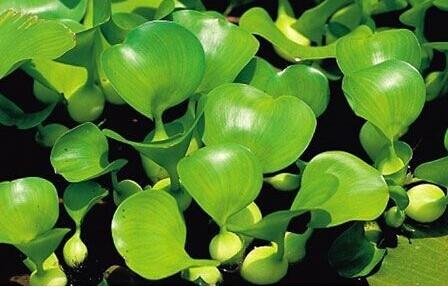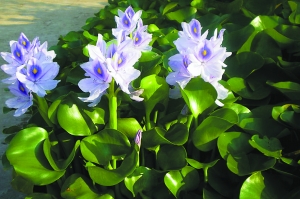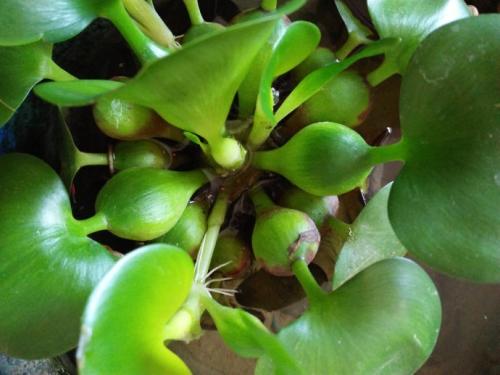How to care for Common Water Hyacinth
Written by Maggie
Dec 22 2020

Beautiful but destructive in the wrong environment, water hyacinths (Eichhornia crassipes) are among the showiest of water garden plants. Flower stalks that grow about six inches (15 cm.) above the foliage arise from the centers of the rosettes in spring, and by the end of spring, each plant holds as many as 20 gorgeous purple flowers. The flowers last until fall and make striking cut flowers. The following are caring tips for growing Common Water Hyacinth.

How to care for Common Water Hyacinth blooming
To get Common Water Hyacinth to bloom, it's best to keep the plants in a well-lit environment and Water them as they grow, usually depending on how the soil changes. Common Water Hyacinth requires a lot of fertilizer when it comes to bracts, so give the plant nitrogen, phosphorus, potassium, or organic fertilizer as appropriate.
1. Get plenty of light for Common Water Hyacinth
Common Water Hyacinth is a Common floating plant, which grows mostly in calm ponds or lakes. Some people may ask how to grow Common Water Hyacinth to bloom. To make Common Water Hyacinth bloom, the plants should be exposed to sufficient light during cultivation. Common Water Hyacinth is a light-loving plant and is best kept in a well-lit environment.
2. Water properly for Common Water Hyacinth
The flowering of Common Water Hyacinth also has a lot to do with the watering method. Common Water Hyacinth requires a lot of Water, and the plants can be watered according to the changes of soil during breeding. We can wait for the soil to be white and then appropriately give plant water. When watering, we can follow the principle that water soil when it's dry and stop watering when it's wet, and it should not retain water.
3. Control the temperature for Common Water Hyacinth
The flowers of Common Water Hyacinth will open at the right time. Common Water Hyacinth likes temperature and does not tolerate cold. In order to make it bloom, it is better to control the breeding temperature at about 20 ~ 30 degrees, at which time the plants will grow faster. In winter, when the temperature is low, Common Water Hyacinth will enter the dormant period. At this stage, it is best to control the temperature at about 15 degrees.
4. Timely fertilization for Common Water Hyacinth
Common Water Hyacinth requires a lot of fertilizer when it is growing, so it is important to fertilize the plants in time, usually by applying nitrogen, phosphorus, potassium or organic fertilizer. It is better to dilute the fertilizer with water before each application to reduce the fertilizer concentration, so that the plant can absorb enough nutrients and thus reduce the chance of fertilizer damage.

How to care for Common Water Hyacinth leaves turning black
Common Water Hyacinth leaves turn black, mainly due to low temperatures and poor Water quality. During the curing period, if the ambient temperature is too low, Common Water Hyacinth will not grow well and its leaves will turn black. If the Water quality is too poor, the stems, branches and leaves of Common Water Hyacinth cannot grow normally, which will also make the leaves turn black. Reasonable adjustments should be made according to different reasons.
Common Water Hyacinth is a floating herb of the genus Hyacinth in the family Hyacinthaceae, also known as Hyacinth. During growth, the leaves of Common Water Hyacinth turn black, possibly because the temperature is too low. Common Water Hyacinth mostly grows in shallow Water. When the Water temperature is below 10 degrees, it will stop growing. If the temperature is too low, Common Water Hyacinth will not grow well and the leaves will gradually turn black.
During the growing period, if the leaves of Common Water Hyacinth appear black, it may be caused by the poor Water quality. During the maintenance period, the Water of Common Water Hyacinth is not changed for a long time, and bacteria will breed after the Water quality is polluted. When the environment is required and the Water quality becomes worse, the Water contains a large number of bacteria, which will affect the normal growth of Common Water Hyacinth and make its leaves black.
During the growing of Common Water Hyacinth, if the temperature is too low and the blades turn black, the temperature should be adjusted. During the winter, Common Water Hyacinth needs to be maintained in a warmer location. The black leaves of Common Water Hyacinth can be pruned properly after the climate warms in spring, and then the leaves can be given enough light, Water and fertilizer.
Common Water Hyacinth needs to be changed if the leaves turn black due to poor Water quality during its growth. During the growing period, the Common Water Hyacinth should be changed regularly to keep the Water clean. During the curing period, proper amounts of light and fertilizer should be given to facilitate the growth of stems, branches and leaves of Common Water Hyacinth, so as to avoid the yellowing of the leaves of Common Water Hyacinth.

Latest Updated
- Benefits of Bugleweed - 7 Science-backed Health Benefits
- Bugleweed Dangers & Side Effects - Is It Poisonous?
- How to Plant Evergreen Trees - What You Should Know
- When to Plant Evergreens - Grow Guide for Evergreen Trees
- 12 Wonderful Evergreen Shrubs for Your Garden
- 12 Popular Evergreen Plants with Pictures for Beginners
- When And How To Prune A Lilac Bush Like a Pro
- How to Grow & Care for Lilac Vine (Hardenbergia Violacea)
- Japanese Lilac Tree (Syringa Reticulata) Care & Propagation Guide
- Shumard Oak Pros and Cons - What to Know
Popular Articles
- Winter maintenance of Antirrhinum Majus
- How to Grow Terminalia Mantaly Tree
- How to Grow and Care for Crossostephium Chinense
- How to grow Antirrhinum Majus in spring
- Peristeria Elata (Dove Orchid) Profile: Info & Care Guide
- Underwatered Snake Plant (Sansevieria Trifasciata) - Signs And How To Fix
- How to Care for Brazilian Jasmine Plant (Mandevilla Sanderi)
- How to Grow & Care for Graptopetalum Purple Delight in Summer
- Rosa Chinensis (China Rose): Plant Growing & Care Tips
- How to Care for Baby Sun Rose (Aptenia Cordifolia)